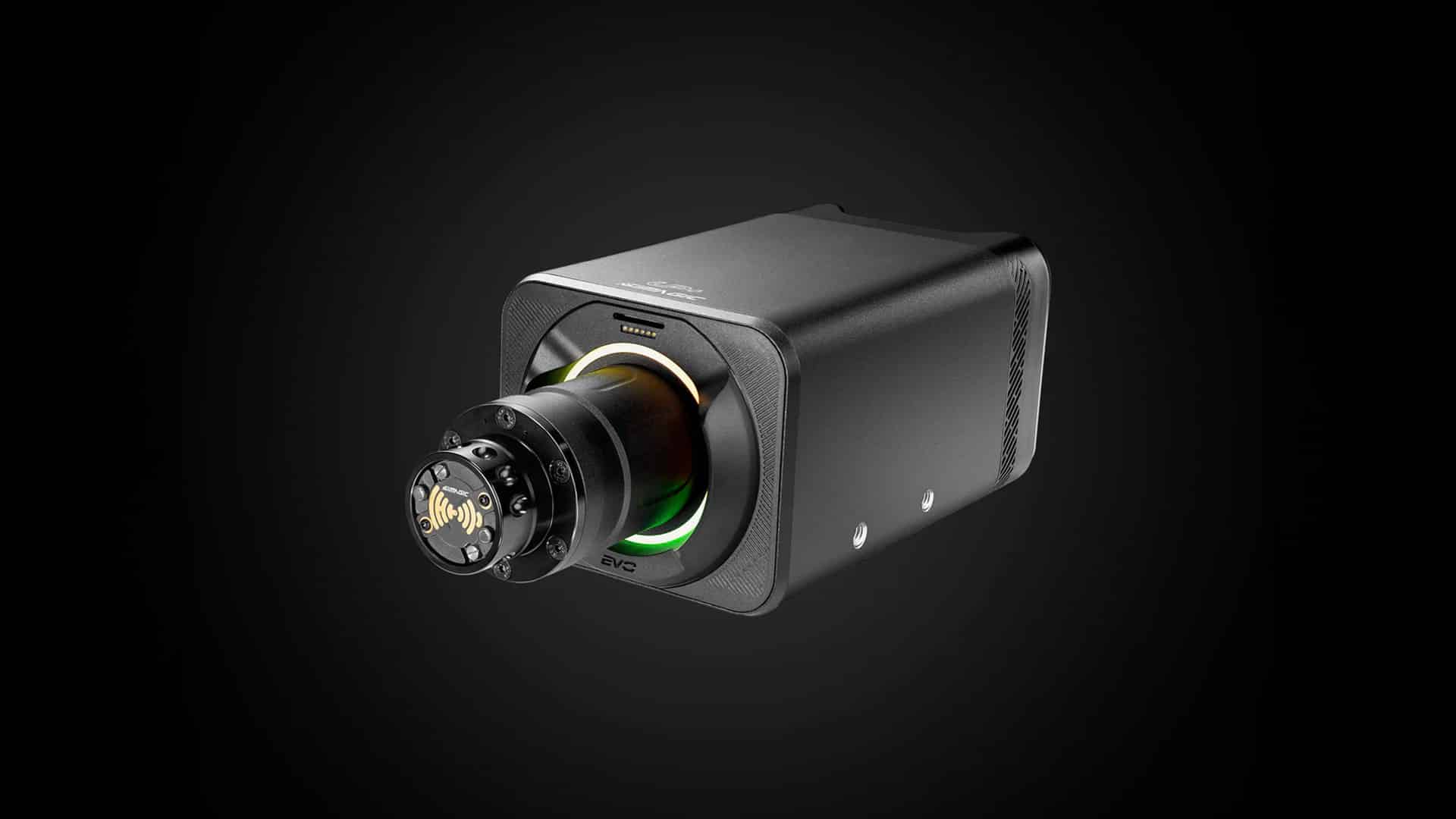As the sim racing market continues to expand, Simagic moved to replace their aging Alpha line up products in 2025 with all new Alpha Evo series. They introduced three distinct models designed to cater to various performance requirements and budgets: the Alpha Evo Sport, Alpha Evo, and Alpha Evo Pro.
Design and Build
While the Simagic Alpha Evo Sport and the standard Alpha Evo share identical compact dimensions, making them suitable for most sim racing rigs, the Alpha Evo Pro is slightly larger due to its more powerful motor. This size difference reflects the increased capability and torque the Pro model offers, though all models retain full metal casing and an identical port layout. Each base has 3 USB A ports, 1 USB B, and 8 RJ12 ports.
Torque and Performance
The core distinction among the Alpha Evo models lies primarily in their torque output.
The Alpha Evo Sport provides 9 Nm of sustained torque, making it a suitable choice for beginners or intermediate sim racers looking for their first nice piece of sim equipment, however we suspect sim racers who have had a direct drive before might want more power.
The standard Alpha Evo steps up to 12 Nm, which should comfortably satisfy most sim racers looking for an intermediate option. At the high end, the Alpha Evo Pro delivers a robust 18 Nm, appealing to enthusiasts who desire a stronger, more immersive driving experience.
Simagic’s specification of sustained torque rather than peak torque is noteworthy, as its typically appealing choice against rivals like the Fanatec CStranslates to a more stable and consistent feel during extended racing sessions. Additionally, all Alpha Evo wheelbases incorporate Simagic’s latest low-inertia motors, designed to enhance responsiveness and improve the precision of steering feedback.
Pricing and Positioning
Pricing remains a key strength for Simagic, offering competitive rates across the range. The Alpha Evo Sport, priced at $399, directly replaces the popular Alpha Mini, positioning itself as an L DD (8 Nm) and Moza R9.
At $549, the standard Alpha Evo undercuts the original Alpha model, although it offers slightly reduced torque (12 Nm versus 15 Nm). Buyers might consider competitive alternatives like Moza’s R12 V1 and R12 V2, priced notably lower at $469 and $499 respectively, potentially influencing purchasing decisions.
The Alpha Evo Pro, priced at $699, bridges the gap between Simagic’s earlier models, falling between the original Alpha and the more powerful but pricier Alpha U (23 Nm at $999). While it offers less torque compared to the Alpha U, it still represents solid value, especially when paired with affordable yet capable wheel rims such as Simagic’s GT Neo.
Competitive Landscape and Features
The Simagic Alpha Evo Sport stands out due to its combination of attractive pricing and competitive torque output, surpassing the Fanatec CSL DD slightly while matching closely with the Moza R9.
The standard Alpha Evo is well-suited for typical sim racers, though its pricing faces stiff competition from Moza’s aggressively priced R12 series. However, the inclusion of support for iRacing’s new 360 Hz force feedback—a feature missing from Moza’s lower-end models—could sway buyers towards Simagic.
The Alpha Evo Pro targets a higher-end audience, offering substantial torque and the same high refresh rate force feedback at an appealing sub-$1,000 price point when paired with Simagic’s GT Neo rim. Competitors like the VRS DFP15 bundle offer similarly priced packages, though slightly less torque.
Conclusion
Simagic’s Alpha Evo lineup provides compelling choices across different performance tiers, combining competitive torque levels, consistent build quality, and attractive pricing. While initial specifications are promising, hands-on testing will ultimately determine how these wheelbases perform in real-world scenarios, solidifying their place within the competitive sim racing market.

